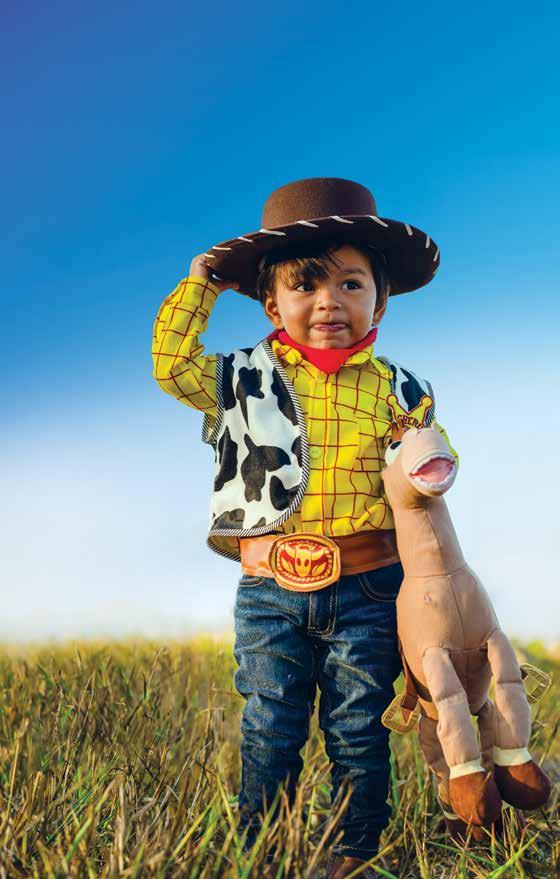
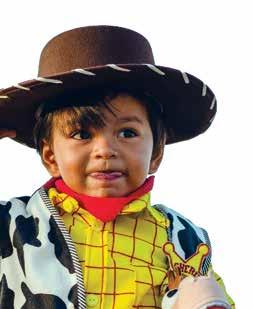

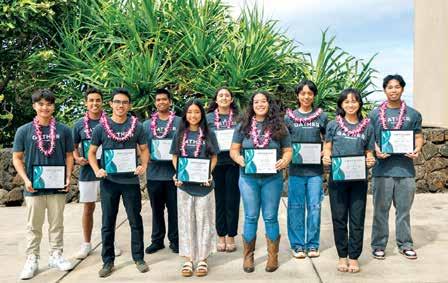








Aloha! I hope all Kaua‘i families had a wonderful and refreshing summer!
As we gear up for the back-to-school season, we all must play an active role in our children’s lives. Our fantastic and talented keiki are constantly observing, absorbing, and developing, and they need the love and guidance of loved ones. We must model positive behavior, foster their aspirations, promote safety, and nurture their well-being.
Mahalo nui loa to the publisher and contributors of Kaua‘i Family Magazine for continuing to support our families by sharing important information, articles, and available resources.
Wishing you the very best for the upcoming school year! Make sure to study hard, have fun, and stay safe!
With warmest aloha,

Derek S. K. Kawakami
Mayor,
County of Kaua‘i
State of Hawai‘i


We at the Kauai Police Department are inviting you to be part of something bigger — a community of protectors safeguarding our cherished Ohana. Our officers don’t just uphold the law; they defend our families, ensuring safety and security for all. Now, it’s your turn to join us and become a guardian of your Ohana. Together, let’s make a difference and protect what matters most.
• Police Evidence Custodian I
• Police Evidence Clerk
• Police Services Officer
• Public Safety Worker I • Parking Enforcement Worker
• Emergency Services Dispatcher I GREAT



KAUAʻI COMPLEX AREA SUPERINTENDENT


Aloha, Kauaʻi families and students!
As the new Superintendent of the Kauaʻi School District, I am honored and excited to welcome you to the 2025-2026 school year! I hope you all had a wonderful, relaxing summer vacation and are feeling recharged and ready for an exciting year ahead.
To our returning families, thank you so much for your continued trust and support. You are a vital part of your child’s education and your partnership with our schools is a key to our success. To our new families: Welcome! We look forward to getting to know you and your children.
Our schools are filled with caring staff committed to creating a safe and positive learning environment for all our students. Thank you to our amazing teachers and staff members whose hard work and dedication is at the heart of our complex area. The commitment you show to our students each and every day inspires me and I am so proud to have this opportunity to lead such a talented and devoted team. I would also like to take a moment to thank Mr. Hamada for his many years of dedicated service and for improving the quality of education for our students here on Kauaʻi. We wish him all the best in his well-deserved retirement.
Here’s to a fantastic 2025-26 school year! One that’s filled with positive experiences and achievements for all our students. Let’s work together to make this a year of growth and success for every child on Kauaʻi!
Sincerely,
Leila Maeda-Kobayashi
Kauaʻi Complex Area Superintendent

This transitional time of year means new routines, new activities, maybe new schools. This issue is chock full of tips and tricks (and treats) for the whole family, from enrichment to education to health and wellness.
The Annual Harvest Festival (Oct. 18) is an absolute can'tmiss, offering food, rides, booths and free pumpkins (p. 12-13). Check out our favorite family happenings (p. 16 -17) for fairs, festivals, parades, costume contests, trunk or treats, celebrations and more!
Set your child up for school success with the benefits of parent involvement (p. 48) and nurture their love of reading (p. 58-59). Pick up fresh produce from local farmers markets (p. 55), so you and your keiki can make healthy lunches, and find school snacks for brain health (p. 46).
Fire Prevention Week kicks off October 4 (p. 21); and it’s more important than ever to have a current emergency preparedness plan, so please heed the advice on page 35. Keep your ‘ohana healthy and take a fun family hike, explore our 7 favorite nature spots (p.42).
Fall on Kaua’i is full of beauty and wonder! We hope this issue of KFM provides you with memorable ways to spend your fall and also valuable resources to aid your health, safety and well-being.
Mahalo, Kaua’i, for allowing Kaua’i Family Magazine to be a part of your ‘ohana!
Chrissy
Chrissy Schechter Publisher chrissys@KauaiFamilyMagazine.com
PUBLISHER
EDITOR-IN-CHIEF
Chrissy Schechter
CREATIVE DIRECTOR
Edie Mann
COPY
EDITOR
Noah Schechter
PRESIDENT OF SALES
Chrissy Schechter
CONTRIBUTING WRITERS
Clyner Antalan, M.D.
Mindy Gipson
Rebecca Hastings
Michael Lutwin, D.D.S.
Sarah Lyons
Joel Punzal,OD
Yobe Qiu
Leah Ragsac
Noah Schechter
Sandi Schwartz
Kim Sueoka
Michelle Young
Kauai Family Magazine is published quarterly as Spring, Summer, Fall and Winter editions. Copyright © 2025 Kauai Family Magazine All rights reserved. No portion of Kauai Family Magazine may be reproduced without written permission from the publisher. Kauai Family Magazine assumes no financial responsibility for errors in advertisements.

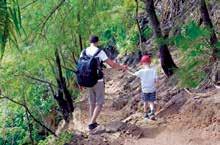








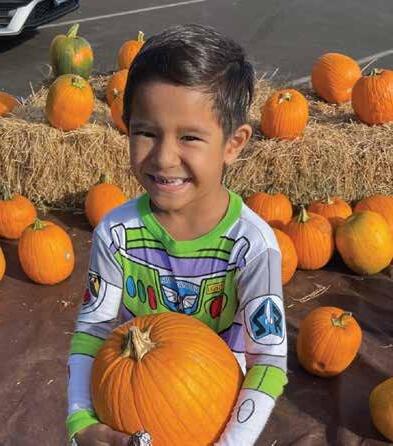








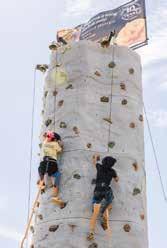






We’re
Saturday, October 18, 2025
Saturday, October 18, 2025
Saturday, October 18, 2025
10AM - 3PM
10AM - 3PM
10AM - 3PM
Hanapēpē Athletic Field
Hanapēpē Athletic Field
Hanapēpē Athletic Field



















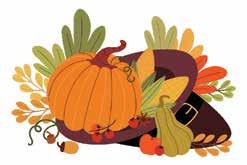























































Heiva i Kaua’i
Sat., Aug. 2 & Sun., Aug. 3
9am–5pm
Tahitian Dance Competition
Kapa’a Beach Park
Food and craft vendors
Admission $8; 12 & under free heivakauai.com
Summer Bash
Resource Fair
Sat., Aug. 2, 3–6pm
Puhi Farmer’s Market Field
School supplies giveaways, food trucks, live music
Comedy Magic Show
Thursdays, Aug. 7–Sept. 4
Pupus and drinks: 6:15–7pm
Magic show: 7–8:30pm
Cabana Bar and Grill
For children ages 8 and older
Back to School Movie Night
A Minecraft Movie
Sat., Aug. 9, 5:30–9pm Kukui Grove
Nā Pali Challenge
Sat., Aug. 9
Hanalei Pier racenapali.com
Kaua’i Relay for Life
American Cancer Society
Sat., Aug. 16, 4–9pm
Vidinha Soccer Field relayforlife.org/kauaihi
Ko'olau Limu Festival
Sat. Aug. 16, 10am–4pm
Anahola Beach Park
Farm Fair Tribute & Fun Fair
Sat., Aug. 23, 11am–3pm Kukui Grove
Kaua’i Marathon Keiki Run
Presented by Wilcox Health
Sat., Aug. 30, 8–10am
Grand Hyatt Kaua’i Resort & Spa
The Kaua’i Marathon & Half Marathon
Sun., Aug. 31, 6am–1pm
Grand Hyatt Kaua’i Resort & Spa thekauaimarathon.com
Hawai'i Line Dance
Festival & Craft Fair
Fri., Sept. 12 & Sat., Sept 13 5–10pm
War Memorial Convention Hall hawaiildf.com
Ultimate Trail Run
Sat., Sept. 13, 7am Ōma’o Track
ultimatehawaiiantrailrun.com
Hanalei Picnic in the Park
Sun., Sept. 14, 2–6pm
Waioli Town Park
Hanalei Soccer Fields
Enjoy mobile skate park, water slides, kids activities hanaleiinitiative.org
Kaua'i Mokihana Festival
Sept. 21–27
A week-long celebration of Hawaiian culture: education, music, hula competition maliefoundation.org
KVMH Auxiliary Craft Fair
Sat., Sept. 27, 9am–12pm
KVMH Campus, Waimea
Healthy Living Fall Celebration
Sat., Sept. 27, 9am–12pm
KVMH Campus, Waimea
Family fun for all ages: vendors, giveaways and more kauai.hhsc.org
Ohana Fit Fest Obstacle Fun Run/Walk
Sat., Sept. 27, 6:30–11am
Prince Albert Park, Princeville knscf.org/fit-fest
Fire Prevention Week
Sat., Oct. 4, 9am–1pm
Food, games, firetrucks and family fun!
Kaua’i Philippine Cultural Center
Grove Farm Crafts Fair & Farmers Market
Sat., Oct. 4, 9:30am–12:30pm Puhi Park
ALOHA Kaua’i
Yoga Festival
Sat., Oct. 4, 8am–5pm
Kaua’i Shores Hotel alohafestival.org
Kaua’i Matsuri Festival
Sat., Oct. 11, 9am– 3pm A Japanese Cultural Festival
Kaua’i War Memorial Convention Hall – FREE kauaijcs.org
Kaua’i Comic Con
Sat. October 12, 11am-6pm War Memorial Convention Hall
Comics, anime, toys, music, art, cosplay and video games
Kaua’i Annual Harvest Festival
Sat., Oct. 18, 10am – 3pm
Hanapēpē Athletic Field
Food, entertainment, rides, free pumpkins and more!
Walk to End Alzheimer’s
Sat., Oct. 18
Walk starts at 8:15am Puakea Golf Course
Email: rochar@alz.org
Kaua’i Chocolate & Coffee Festival
Sun., Oct. 19, 10am–4pm Kilohana Luau Pavilion kauaichocolateand coffeefestival.com
25th KCA Annual Fall Festival
Kaua’i Christian Academy Fri., Oct. 24 & Sat., Oct. 25 4–8:30pm
Family FUN in a carnival atmosphere
Kīlauea kcaschool.org
Events are subject to change without notice. Always call event first to confirm.
Make a Difference Day
at Lydgate Beach Park
Sat., Oct. 25, 8:30–11:30am
Lydgate Park Main Pavilion
Family workday for all ages kauaipath.org
Rice Street Block Party
Sat. October 25 4-8pm
Downtown Līhu’e
Keiki zone, local vendors and entertainment
Candylane & Glow Show
Sun., Oct. 26, 5–8pm
Kings Chapel, Līhu’e – FREE kingskauai.com
Annual SMMH Keiki
Halloween Parade
Thurs., Oct. 30
Open to the neighboring schools starting at 9:30am
Open to the public from 10:30–11:30am
Kapa'a
KVMH Baby
Halloween Parade
Fri., Oct. 31, 11:30am–1pm
Front entry to KVMH
Medical Office Building
Waimea
Keiki 4 years of age and under
Wilcox Halloween
Keiki Parade
Fri., Oct. 31, 12–1pm
Wilcox Medical Center lobby
Keiki 4 years of age and under Keiki parade, costume contest and trick-or-treating
Refreshments will be served wilcoxhealth.org
Arbor Day Plants Giveaway
Sat., Nov. 1, 9am–12pm Kukui Grove
Emalani Festival
Sat., Nov. 1, 9 am–4 pm Kōke'e State Park
Kaua’i Veterans Celebration
Sat., Nov. 1, 9 am–2 pm
Historic County Lawn 5K, local food trucks, games and veteran services
Halloween Candy Buy Back
Mon., Nov. 3, 3–5pm Trade in your candy at Kalaheo Dental Group kalaheodental.com
Hanapēpē’s Biggest Little Carnival
Sat., Nov. 8, 10am–6pm Sun., Nov. 9, 10am–4pm Hanapēpē Pop Warner and Hanapēpē Youth Baseball Alden Pablo: 808-346-9613
“Wings and Woodlands: Tribute to Native Birds and Forests” Exhibition: Nov. 8–14
KSA Gallery, Kukui Grove
Hawaii Children’s Theatre Presents The Music Man Nov. 21–30
War Memorial Convention Hall hctkauai.org
5k Turkey Trot & 9 Hole Turkey Shoot
Thanksgiving Morning Thurs., Nov. 27, 6–9 am
Ocean Course Hokuala, Līhu’e kauaiturkeytrot.org
The Kaua‘i Japanese Cultural Society presents
The Kaua‘i Japanese Cultural Society presents
The Kaua‘i Japanese Cultural Society presents
The Kaua‘i Japanese Cultural Society presents
The Kaua‘i Japanese Cultural Society presents
c ural
ural festival
Saturday, October 14
Saturday, October 11
Kaua`i War Memorial Convention Hall 9:30AM to 2:30PM
Kaua`i War Memorial Convention Hall 9AM to 3PM
Admission is free, and all are welcome
Admission is free, and all are welcome
Featuring shamisen player Anju Madoka, singers Sheree Tamura and Torao Hikariyama
Featuring shamisen player Anju Madoka and singers Sheree Tamura and Aolani Silva
• Food
• Food
• Mochi making
• Mochi making
• Kanzashi making
• Kanzashi making
• Origami
• Nintendo Gaming
• Kaua‘i Bonsai
• Kaua‘i Bonsai
• Tea ceremony
• Tea ceremony
• Craft vendors
• Craft vendors
• Japanese dancing
• Japanese dancing
For more information visit our website at kauaijcs.org
For more information visit our website at: kauaijcs.org
If you need assistance in order to participate; such as an interpreter, assistive listening device, or an alternate format of materials, call Pearl Shimizu at (808) 822-5353, one week prior to event.


If you need assistance in order to participate; such as an Interpreter, assistive listening device, or an alternate format of materials call Pearl Shimizu at (808) 822-5353, one week prior to event.

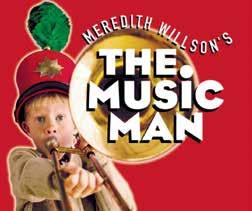










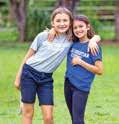





HOWL-O-WEEN DOGGIE COSTUME CONTEST
Sat., Oct. 11, 2pm Kukui Grove
HALLOWEEN MOVIE NIGHT
Sat., Oct. 18, 5–9pm Kukui Grove
HARVEST FESTIVAL
Sat., Oct. 18, 10am–3pm
Hanapēpē Athletic Field Free admission
Free pumpkins
Food, entertainment, rides, educational tent and more!
25TH KAUA’I CHRISTIAN ACADEMY FALL FESTIVAL
Fri., Oct. 24 & Sat., Oct. 25 4–8:30pm
Kauai Christian Academy
Family FUN in a carnival atmosphere
Kīlauea
kcaschool.org
HALLOWEEN FESTIVAL
Sat., Oct. 25, 10am–2pm Costume contest and center-wide tricks-or-treats
Kukui Grove
Sun, Oct. 26, 3–6pm
Kukui Grove
& GLOW SHOW
Sun., Oct. 26, 5–8pm Kings Chapel, Līhu’e Fun, candy and prizes – FREE kingskauai.com
ANNUAL SMMH KEIKI HALLOWEEN PARADE
Thurs., Oct. 30
Open to the neighboring schools starting at 9:30am Open to the public from 10:30-11:30am Kapa’a
HALLOWEEN FREAKY FRIDAY
Fri., Oct. 31, 5–8pm
Kukui Grove
KVMH BABY HALLOWEEN PARADE
Fri., Oct. 31, 11:30am–1pm
Front entry to KVMH Medical Office Building Waimea Keiki 4 years of age and under
WILCOX HALLOWEEN KEIKI PARADE
Fri., Oct. 31, 12–1pm Wilcox Medical Center lobby Keiki parade, costume contest and trick-or-treating Keiki 4 years of age and under Refreshments will be served wilcoxhealth.org
HALLOWEEN CANDY BUY BACK
Mon., Nov. 3, 3–5pm
Trade in your candy at Kalaheo Dental Group kalaheodental.com
Breakfast
8:30
Banana
Fluffy
Portuguese
Breakfast
Macaroni
Steamed
Mini
Mini
Grapes



These adorable no-carve Minion pumpkins are a fun alternative to traditional pumpkin carving.
2 soda cans (per pumpkin)
White paper or foam
Yellow acrylic paint
Blue acrylic paint
White paint or paint pen
Black Sharpie
Hot glue gun
1. Paint the top 3/4 of the pumpkin yellow.
2. Use blue paint for their overalls; white paint pen for their teeth; and a Sharpie for the black areas.
3. Use a soda can to trace circles where their goggles will be.
4. Use the paper or foam for the whites of their eyes.
5. Hot glue the bottom of the soda cans for their goggles.





















By Kim Sueoka, Kaua’i Adult Day Health Center Program Director

and
Aloha, kūpuna, caregivers, and friends, and warmest greetings to you this fall season!
What stands out in your mind during this season of change?
Just as we may be noticing the shifting angle of the sun and the beginnings of winter ocean conditions from the
shore, the fall season is an invitation to notice changes in ourselves and the people around us without judgement; a gift for our present and ongoing life-navigation.
The kūpuna and staff at Kaua’i Adult Day Health rely on this gift throughout the year, but we are especially reminded of its potency in the fall, when we walk together toward some days of the year most
strongly associated with family and faith traditions.
Changes such as the loss of a loved one or the emergence of a new health condition add new dimensions to the ways we think, feel, and engage with our traditions.
Each change is an opportunity to ask: How might we modify our roles to better fit who we are today? How can we harness our strengths to celebrate what is most important to us in this moment? What creative approaches can we take to building support for ourselves and each other?
A favorite pastime at Kaua’i Adult Day Health, for kūpuna and staff alike, is dancing. With nimble feet and hands like birds, our kūpuna bust out the moves, and the center erupts in cheers and applause. Sometimes the dancing is seated – led by a spirited staff member or volunteer. At other times the kūpuna take the lead, sweeping the floor with a hula, an adapted fox trot, twist, or Japanese odori; the staff alongside them the luckiest dance partners in town.
For those observing or participating in this glorious ritual, the learning is immediate and sometimes very emotional: we dance our way into and through our changes. We dance together, fortified because we see and acknowledge one another.
The range of our experiences and feelings around change are as varied as the leaves and branches around our beautiful island. Mahalo to all kūpuna
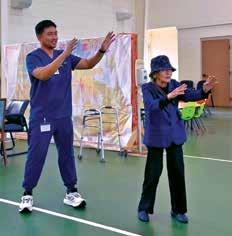
for teaching us to create a space for this reality. Mahalo to all caregivers, families, and friends, for navigating change with compassion and openness. It is an honor to share the dancefloor with you, and I look forward to what more we will learn together.



For more information about Kauaʻi Adult Day Health or to schedule a FREE one-day trial visit at our center, call us or visit our website: (808) 246-6919 ohanapacific.com/ kauai-adult-day-health-center 2943 Kress Street, Lihue
Every 13 seconds, an older adult is seen in an emergency department for a fall-related injury. Many falls are preventable. Stay safe with these tips!
Find a good balance and exercise program
Look to build balance, strength, and exibility
Contact your local Area Agency on Aging for referrals. Find a program you like and take a friend.
Find a good balance and exercise program. Look to build balance, strength, and flexibility. Contact your local Area Agency on Aging for referrals. Find a program you like and take a friend.
Talk to your health care provider.
Talk to your health care provider
Ask for an assessment of your risk of falling. Share your history of recent falls
Ask for an assessment of your risk of falling. Share your history of recent falls.

Regularly review your medications with your doctor or pharmacist
Make sure side effe cts aren’t increasing your risk of f alling Take medi cations only as prescr ibed
Regularly review your medications with your doctor or pharmacist. Make sure side effects aren’t increasing your risk of falling. Take medications only as prescribed.
Get your vision and hearing checked annually and update your eyeglasses
Your eyes and ears are key to keeping you on your feet.
Get your vision and hearing checked annually and update your eyeglasses. Your eyes and ears are key to keeping you on your feet.
Keep your home safe.
Keep your home safe
Remove tripping hazards, i ncrease lighting, make stairs safe, and install grab bars in key areas
Remove tripping hazards, increase lighting, make stairs safe, and install grab bars in key areas.
Talk to your family members
Talk to your family members.
Enlist their support in taking simple steps to stay safe Falls are not just a seniors’ i ssue.
Enlist their support in taking simple steps to stay safe. Falls are not just a seniors’ issue.



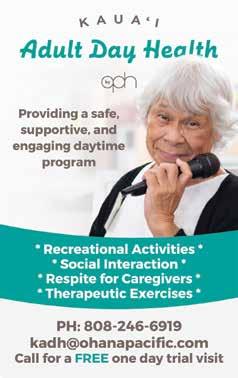

Leah Ragsac, Kauai Realty
One of the most common questions I hear is: “How’s the real estate market on Kaua‘i?” And closely following that: “Are Kaua‘i residents still able to buy homes here?”
The answer is yes — many Kaua‘i residents are still purchasing property, though it often requires careful planning and the right support.
Despite rising interest rates and limited inventory, demand remains steady. Well-priced homes often attract multiple offers. Many residents are turning to firsttime homebuyer programs and lenders can sometimes offer tailored solutions to help make homeownership possible.
Some are starting with condos or more affordable properties, while others are pooling resources with family or exploring land purchases for future building. There’s a growing trend of working with what’s available — including fixer-uppers or shared ownership — to stay connected to the community.
Affordability is still a major challenge, but the good news is that more programs and conversations are happening around creating housing options that support Kaua‘i’s long-term residents.




So yes — Kaua‘i residents are still buying. And with patience, creative strategies, and the right team, owning a home on the island is still within reach.
For the most updated list of homes for sale visit www.LeahRagsac.com




































Households should have a 14-day supply of nonperishable food, water, and medication! are aware have 82% 13%

Shelter with friends/family
public shelter
As the category of storm increases, more Kauai fami lies plan to evacuate to a public shelter.
Most households did not identify any barriers to ev acuation, however 19% have concerns about leaving pets behind.

For information on pet sheltering, including the su pplies you should bring with you, and to view which shelters have bee n opened on Kauaʻi in response to a local emergency, please visit: KEMAʻs Shelter Page.


This information was collected through a Community Assessment for Public Health Emergency Response (CASPER) survey in June 2024. To view Kauai CASPER data, please visit health.hawaii.gov/kauai/casper.










BY YOBE QIU
The annual Moon Festival, which falls on October 6th this year, is celebrated by Asian communities around the world. Also known as the Mid-Autumn Festival, it’s a joyous time to gather with family and friends to appreciate the full moon, which symbolizes unity and harmony. The following traditions offer ways to connect with loved ones, celebrate cultural heritage and create lasting memories.
May this Moon Festival for the bonds that unite us. a deeper appreciation happiness, harmony and bring you and your family
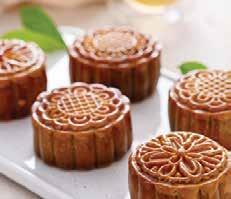
1. Eat moon cakes. Moon cakes are the quintessential treat of the Moon Festival. These round pastries symbolize union and completeness and come in a variety of flavors, from traditional lotus seed paste with salted egg yolk, to more modern fillings like chocolate and matcha. Sharing moon cakes is a heartfelt way to express love and appreciation for those close to you. Find a recipe at byyobeqiu.com/blogs/blog-posteasy-mooncake-recipe.
2. Share a meal together. There’s no better way to honor the tradition of the Moon Festival than enjoying a festive dinner of traditional dishes that symbolize prosperity, harmony and happiness. Popular foods include roast duck, taro and pomelo, each with its own cultural significance. Hosting or attending a Moon Festival meal is a wonderful way to connect, share stories, strengthen bonds and celebrate togetherness.
3. Have a family movie night! Watch the animated movie Over the Moon (on Netflix) about a girl who builds a rocket to fly to the moon to prove that the legendary moon goddess is real.
4. Observe the moon.
The full moon is a symbol of family union and harmony. Take time during the Mid-Autumn Festival to admire the moon’s beauty, reflecting on its significance and the traditions it represents. This year’s full moon will be visible at 5:47am HST. This age-old practice connects people with nature and loved ones, near and far. Gather outdoors, look up at the night sky and share stories.
5. Make colorful lanterns. Lantern-making is a fun, creative activity that adds a vibrant touch to Moon Festival celebrations. Crafting lanterns in various shapes, sizes and colors honors tradition and gets everyone in a festive spirit. Hang them all around the house; carry them in a lantern parade; or float them on water. Their gentle glow creates a magical atmosphere.
6. Read books. Reading books is an excellent way to teach children the meanings behind the Moon Festival traditions. Our Moon Festival by Yobe Qiu (ages 4–8)
A Big Mooncake for Little Star by Grace Lin (ages 4–8) All Four Quarters of the Moon by Shirley Marr (ages 8–12)


Kaua‘i Veterans Memorial Hospital (KVMH)
Samuel Mahelona Memorial Hospital (SMMH)
Kaua‘i Region Clinics
E Pono M a u Loa ~ Alw a ys Ex c el l ent
With a commitment to healing and a deep dedication to our community, our providers have been making a meaningful impact across the island. We're proud to recognize the care, expertise, and aloha they bring to our clinics and the families we serve.



KANAYO SAKAI, APRN, PMHNP-BC
Nurse Practitioner
SPECIALTIES:
• Board Certified Psychiatry/Mental Health (Across the Lifespan)
• Perinatal mental health trained
CLINICS: PORT ALLEN, LĪHU‘E and KAPA‘A
SUSAN MINNICH, DNP, APRN-Rx, FNP-BC
Nurse Practitioner / Family Medicine
SPECIALTY:
Board Certified Family Nurse Practitioner
CLINICS: KALĀHEO and LĪHU‘E
CHELSEA “NANI” DOMINGCIL, APRN
Advanced Practice Registered Nurse AREA OF FOCUS
• Primary Care, Family Practice
• Family Health and Wellness
CLINIC AT LĪHU‘E
Fluent in Hawaiian Language
HHSC Kaua‘i Region Clinics are here to serve our community. CALL FOR AN APPOINTMENT AT ANY OF OUR SIX CLINICS
THE CLINIC AT WAIMEA: (808) 338-8311
THE CLINIC AT PORT ALLEN: (808) 335-0579
THE CLINIC AT KALĀHEO: (808) 332-8523
THE SPECIALTY CLINIC AT KALĀHEO (808) 378-4557 (Pediatric)
THE CLINIC AT LĪHU‘E: (808) 241-5799
THE CLINIC AT KAPA‘A : (808) 823-4157



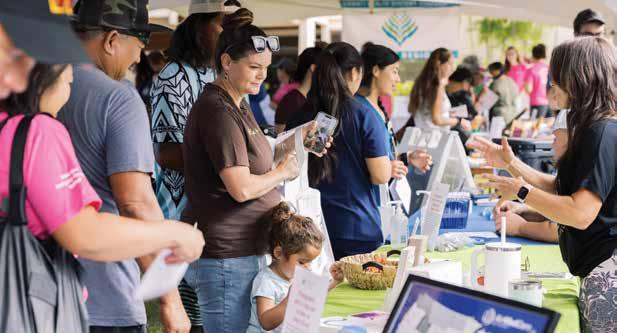
personality aloha, and decades
9:00am - Noon
KVMH Campus • Waimea, Kaua‘i FIRST ANNUAL • OCTOBER 26, 2024
SEPTEMBER 27, 2025
9:00am - Noon
KVMH Campus • Waimea

APANA
Join us as legendary Hawai‘i radio and television Mele Apana takes the stage as our emcee, bringing her signature energy, decades of entertainment experience to our HEALTHY LIVING event.
KVMH Auxiliary Annual Craft Fair

partners with Kaua‘i Healthy Living Celebration featuring local craft vendors. Start your holiday shopping with us. Craft Vendors are welcomed. Contact: Charlene Dorsey at (808) 346-2422 or luvgiraffe2000@gmail.com
A Community Celebration for the entire family!
HEALTHY LIVING VENDORS AND KAUA‘I REGION HEALTH TEAMS
HEALTH TIPS FROM A DOCTOR
PASSPORT TO HEALTHY LIVING
• FAMILY FUN • FOOD • LUCKY DRAWING
FREE GIVEAWAYS • ENTERTAINMENT BY: Cruz Control duo
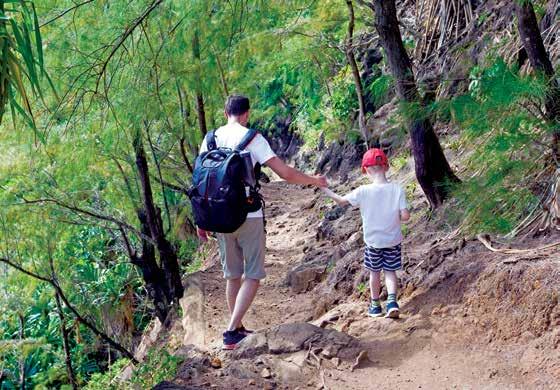

Kōke‘e State Park: Nature Loop Trail
0.6 miles (loop)
Highlights: This short and scenic trail is ideal for families with young children. The path meanders through native Hawaiian forest and offers glimpses of the island’s unique flora and fauna. It’s a great way to introduce kids to Kaua‘i’s lush landscapes without a strenuous climb. Start at the Kōke‘e Visitors Center behind the Lodge.
Tips: Bring binoculars to spot native birds like the ‘apapane or ‘i‘iwi.

4 miles (round trip)
Highlights: Located on the sunny south shore, this coastal trail offers stunning views of limestone cliffs, tide pools, and hidden beaches. The relatively flat terrain makes it accessible for beginners, while the dramatic scenery keeps it exciting for all ages.
Tips: Wear sturdy shoes, as parts of the trail can be rocky, and there’s little shade.
2 miles (one way)
Highlights: This trail offers a gentle ascent through lush rainforest with sweeping views of the Wailua Valley. The wide, well-maintained path is perfect for families, and the picnic area at the halfway point makes for a great snack break.
Tips: The trail can be muddy after rain, so wear shoes that are good for traction.
Plan. Check the weather and trail conditions before heading out. Kaua‘i’s weather can change quickly, so be prepared for sun and rain.
Pack essentials. Bring water, snacks, sunscreen, bug spray, a first-aid kit, and a cell phone.
Dress comfortably. Wear lightweight, moisture-wicking clothing and sturdy shoes suitable for uneven terrain.
Stay safe. Stick to marked trails and supervise children, especially near cliffs or water.
1.8 miles (one way)
Highlights: This popular trail on the island’s east side leads to a scenic lookout with panoramic views of the coastline and valleys. The gentle switchbacks make it manageable for beginners, though the final stretch may be steep for younger kids.
Tips: Start early to avoid the midday heat and bring plenty of water.
4.5 miles (loop)
Highlights: Nestled in the north shore’s lush landscapes, this leisurely hike takes you through a working farm, past a serene mahogany forest, to the historic Stone Dam. Lots of photo opps.
Tips: Check for trail access permissions and guidelines, as this is located on private property.
(The Path That Goes by the Coast)
Up to 8 miles (paved path)
Highlights: This coastal path is perfect for families with strollers or those looking for a relaxed walk. Stretching along Kaua‘i’s eastern shore, it offers breathtaking views, beach access, and picnic spots.
Tips: Bring bikes, scooters, and helmets!
1 mile (round trip)
Highlights: A peaceful walk surrounded by the stunning Hanalei Valley provides opportunities to see native birds and learn about Kaua‘i’s wetlands.
Tips: Respect wildlife: stay on designated paths to protect the fragile ecosystem.


Fall into fun this October with family outings to some of Kauai’s favorite fall happenings. Hop on a hayride, pick the perfect pumpkin, and show off your best Halloween costumes!
Don’t miss the 18th Annual Halloween Keiki Parade! Children aged four and under are invited to an awesome parade, featuring a costume contest and trick-or-treating. This beloved annual event offers a wonderful way to celebrate Halloween. Thurs., Oct. 31, 12–1pm Wilcox Medical Center lobby (wilcoxhealth.org)

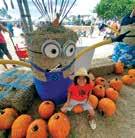
Celebrate the spooky season with joy and laughter at this year’s 12th Annual Harvest Festival! This free event offers great harvest vibes with free pumpkins, delicious food, lively entertainment, games, and boundless fun for the whole family! Sat., Oct. 18, 10am–3pm • Hanapēpē Athletic Field (facebook.com/kekahatheplace)
Experience Kaua’i Christian Academy’s 25th Annual Fall Festival! This event brings family fun in a vibrant carnival atmosphere, featuring games, hayrides, bounce houses, and pony rides. Enjoy local food, a bake sale, and an incredible silent auction. Fri., Oct. 24 and Sat., Oct. 25, 4–8:30pm Kaua’i Christian Academy Campus (kcaschool.org)












Back to school means packing a nutritious lunch and snacks to sustain your child’s mental energy all day. Finding brainhealthy snacks that actually taste good is easier than you might think. Here are a few to try!
All berries are great for brain power, but blueberries stand above the rest. They’re perfect for quick energy and the deep blue color tells us they’re full of antioxidants. Studies have found that diets high in blueberries show improvement in memory and concentration. Blueberries even support the production of the “happy” neurotransmitter, serotonin, to help with the back-to-school-blues.
The brain is almost completely made of fat, so eating a variety of fats is important for peak performance. Avocados help the brain cells remain flexible and protects nerve cells from damage. Mash an avocado onto a rice cracker for a fun handheld snack.
If you haven’t tried chia pudding before, now’s the chance! Chia seeds are bursting with brain benefits, like healthy omega-3 fatty acids, antioxidants, zinc, and magnesium. These easy squeeze packs are perfect to toss in a lunch box and will keep your little one going until the bell rings.
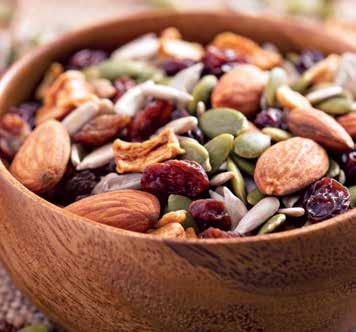
Nuts are superfoods for the brain! Walnuts are particularly powerful because they are rich in anti-inflammatory omega 3 fatty acids, such as DHA, which are essential for brain function. They also have twice as many antioxidants as other nuts. The natural sweetness from the dried fruit makes this a kid-friendly snack.
Here’s a snack you can whip up while you’re still waiting for your coffee to brew. Simply spread some natural almond butter on a whole wheat tortilla and roll a banana up in it. It has quick energy in the carbs and sustained energy in the fat. Bananas are also a great source of potassium, which helps brain cells communicate with each other and stave off the dreaded “brain fog”.

We all know dark leafy greens are part of a healthy diet, but I’ve yet to meet a kid that can’t get enough kale. Luckily, fruit and greens squeeze packs are a tasty way to sneak it into your kids’ diet without fuss. Research even tells us that those who routinely eat dark leafy greens have a mental edge over people who rarely or never eat them.
Most of us wouldn’t think of seaweed as the ideal kid snack, but kids go nuts for them! They’re crunchy, slightly salty, and a much better alternative to potato chips. Best of all, they’re rich in iodine. Research finds that even mild deficiencies of iodine can impair brain function in kids. Seaweed snacks are a great way to make sure your little one’s iodine bases are covered.
Researchers found that eating healthy carbs, such as oatmeal, is like a shot of energy to the brain. The quick glucose is used for energy, attention, and concentration. Oatmeal and fruit squeeze packs are a simple and time-saving way to get your kids to eat oats.

“When schools, families, and community groups work together to support learning, children tend to do better in school, stay in school longer, and like school more.” A New Wave of Evidence, a report from Southwest Educational Development Laboratory (2002) (39)
The success of a child’s education is due to the fine synchronization of the workings of the parent, teacher and student, like the “wheels working together in sync on a tricycle.” If one wheel is not working the other two wheels will have a hard time moving forward. Research also
indicates that regardless of what the family’s socioeconomic status is, if parents are involved in their child’s education the child is more likely to do well in academics, testing and be able to take accelerated classes.
It is important that parents get involved with their child’s education. Far too long parents have given the responsibility to educate their child to the schools and teachers. Parents are the primary “educators” of their children. Research shows that learning begins before birth in the mother’s womb and continues after birth.
It is important that parents are collaborators with their child and teacher to ensure a successful educational experience from pre-school and throughout their years of schooling. Here are a few ways parents can be involved.
Parents can:
Create a learning environment in the home.
Make sure your child is on time to school every day. Expect your child to achieve in school and a plan for a future career. Actively participate in school and community activities with your child.
Everyone benefits from involved parents, children, educator and parents. Benefits for the child:
Academic achievement, test scores and attendance are high
Homework is done on time with few errors
Self-esteem is high, students are motivated to become independent learners and have higher aspirations
Children have a more positive attitude about school, are less likely to have discipline problems and drop out of school
Parent/child interaction improves the child’s social, emotional and intellectual demeanor
Benefits for the parent:
Parents gain confidence of their parenting and decision-making skills.
Parents are eager to participate in homework and projects at home. The parent/child relationship gets better when parents pay attention to the educational needs of child.
Benefits for the educator:
High parental involvement equates to high staff and principal morale.
Parents tend to develop a much higher respect for the teacher as a professional.
Consistent parent involvement means better communication and relations between the home and school.
Teachers and principals develop a deeper understanding and respect of their students and families
Teacher’s morale increases when supportive parents are actively involved in their child’s education
The benefits far outweigh the losses when parents are involved in their child’s education. The three wheeled tricycle is a symbol of the parent, child and educator working in sync for a successful and positive educational experience for their child.
“Would You Rather” questions expand your kids’ thinking while allowing you to discover the inner workings of their young minds. They’re great conversation starters when you’re in the car, going for a walk, eating dinner or just hanging out together as a family. Use this list to get you started and then create your own. Encourage your kids to come up with ones for you!

1 have a pet puppy or a pet kitten?
2 wear a silly hat or funny glasses?
3 play in the sand or in the water?
4 swim like a fish or fly like a bird?
5 be super smart or super cool?
6 jump rope or hula hoop?
7 be friends with a dinosaur or robot?

1 be a pirate or a knight?
2 live in a treehouse or in an underground house?
3 be able to talk to animals or speak every language?

4 visit the past or the future?
5 make everyone laugh or make everyone happy?

6 be a detective or an explorer?
7 have a pet that can tell jokes or a pet that can sing songs?
8 change the rules of any game or create a new game?
1 be able to predict the future or change the past?
2 be a scientist or an inventor?
3 have a cloud that rains confetti or a lake that fills with jelly?



4 have a house that can teleport or a car that can fly?
5 have spaghetti for hair or marshmallows for hands?
6 create a business or buy an established business?
7 have a smart but boring robot or a foolish but funny robot?

8 be able to control gravity or time?
1 live in a world where everyone is always happy or everyone is always kind?
2 be able to rewrite history or write your own future?
3 have a life where you are always authentic or a life where you are always adaptable?

4 live in a castle with secret passages or a modern mansion with the latest technology?
5 follow the rules but feel restricted or break the rules to do what feels right?
6 secretly re-gift a present you don’t like or keep it and never use it?
7 remember every dream you’ve ever had or every conversation you’ve ever had?


Nov. 1 Entries Close Nov. 15 Semifinalists announced Nov. 15 Voting opens for semifinalists Nov. 29 Voting closes Dec. 8 Winners announced We’re looking for kids with
coversearch@kauaifamilymagazine.com or visit our website for complete rules and more information. Enter online at KauaiFamilyMagazine.com
Does your child love to read and write? Do they have a knack for music? When they tell a story, do they tend to use their whole body? Are they drawn to groups or do they prefer to work alone? Answers to these questions can give a clue about your child’s learning style.
A learning style is the method a person uses to learn — and should be used to maximize learning (and minimize frustration). It’s important for parents to understand their child’s learning style so they find the study techniques, environments and activities that help them learn best, which allows them to get the most out of their education.
Knowing your child’s learning style can also equip you to handle challenges that may occur because
of their preferred learning style. And don’t be surprised if your child prefers a combination of learning styles, as this is quite common.
Visual. Visual learners rely heavily on sight to take in new information. They typically have good spatial awareness, sense of direction, and enjoy drawing/doodling. Study tips for these learners include: Write information down.
Underline or highlight important information while reading. Use colorful diagrams, charts, drawings and other visual aids.
Auditory. Kids who are auditory learners are typically drawn to music. They may sing, play a musical instrument or have the “ear” to pick individual musical instruments
out of a piece of music. Study tips for these learners include:
Use music and rhythm to remember information.
Read/recite information aloud, maybe even record and playback. Hum, sing or tap feet while working (where allowed).
Verbal. Kids with a verbal learning style easily express themselves in both spoken and written communication. Verbal learners have a rich vocabulary and consistently seek out new words to add to it. Study tips for these learners include:
Use rhymes, acronyms and other word associations as mnemonic devices. Take detailed notes. Rewrite and paraphrase your notes using your own verbiage.
Physical. Kids who prefer using their bodies, hands and sense of touch are physical learners. They often enjoy drama, dancing, woodworking or exercise. Moving their bodies helps them clear their minds. Therefore, sitting still can be a challenge; they often fidget. Study tips for these learners include: Use fidget toys and squeeze balls to allow non-disruptive movement.
Allow full-body movement when possible, like pacing and standing.
Create and use flashcards. Take frequent breaks.
Logical. Kids with a logical learning style generally excel in math and critical thinking. They recognize patterns and commonalities in seemingly unrelated content. They often understand and work complex calculations in their head. Study tips for these learners include: Set specific goals and objectives. Make to-do lists, agendas, charts and actionable procedures. Do not simply memorize: understanding the concepts and reasons behind information leads to long-term retention.
Social. Social learners love working in groups and participating in class. They relate well to their peers and enjoy hearing others’ ideas and sharing their own. They tend to be well-liked and seen as leaders. Study tips for these learners include: Do group projects when possible. Create study groups. Even if everyone is studying different things, being together is key. Role play for greater retention.
Solitary. Kids with a solitary learning style prefer working alone. They tend to be independent, introspective and private, and have strong concentration skills. Study alone in quiet spaces. Always keep noise-canceling headphones handy. Keep a journal to reflect on personal thoughts and feelings. Make an agenda to keep on task.
Understanding your child’s learning strengths (and weaknesses) can improve their experience at school and their study habits at home.

By Dr. Clyner Antalan Kaua‘i Medical Clinic OB-GYN
Suddenly you can eat more at lunch. You marvel at the movements you see and feel from your little one, even as your abdomen skin stretches and just won’t stop itching! The second trimester is a magical time for moms-to-be, and even more is going on under the surface.
Dr. Clyner Antalan, OB-GYN at Kaua‘i Medical Clinic, says this time, from 13 to 27 weeks, can be surprising for some first-time families. Here are three fun facts about your baby’s development.
They can taste and smell.
You can see their growing arms, legs and head, but have you ever thought about babies’ tastebuds?
Dr. Antalan says those develop between week 13 and 15, meaning babies can sense flavors through the amniotic fluid. “Studies show babies react to flavors like garlic and vanilla through facial expressions in the womb,” he said. So, eat different foods. It introduces them to different tastes, which can help broaden their food preferences later in life.
Voices and music matter.
By week 20, the sense of sound arrives. Speak to your baby because he or she is listening! “Talking, singing or playing music can stimulate bonding between mother and baby even before birth,” Dr. Antalan said. Beyond the emotional growth, research shows prenatal exposure to music may support brain development and even help calm the baby after birth.
You may need to go shoe shopping. Your hormone levels are changing, ligaments loosen, and weight gain can flatten foot arches. For some women, those all add up to growing feet. Many moms-to-be find they need to go up half a shoe size or even more. It’s a great excuse to shop for a new pair of mom-on-the-go sandals or slides.

“Talking, singing or playing music can stimulate bonding between mother and baby even before birth.”
Waipa Farmers Market (Hanalei)
Tuesdays 3pm-5pm
Hale Halawai Farmers Market (Hanalei)
Saturdays 9:30am-Noon
Anaina Hou Farmers Market (Kilauea)
Saturdays 9am-Noon
Kealia Farm Market (Kealia)
Mondays & Fridays 3pm-6pm
Coconut Marketplace (Kapaa)
Tuesdays & Thursdays 9am-1pm
County Sunshine Market (Kapaa)
Wednesdays 3pm-4:30pm
Grove Farm’s Puhi Park Produce (Lihue)
Saturdays at 9:30am
Pau Hana Market Kukui Grove Center (Lihue)
Mondays 3pm-5:30pm
Shops at Kukuiula (Poipu)
Wednesdays 3:30pm-5:30pm
County Sunshine Market (Hanapepe)
Thursdays 3pm-4pm
Hale Puna Farmer’s Market (Waimea)
Thursdays 3pm-5pm



grades writing math students science desk teacher paper books reading friends library pencil homework school subjects

By Punzal Vision, Dr. Joel E. Punzal, OD
Caring for eyes can be both enjoyable and meaningful for kids! Try these easy ways to build healthy habits:
• Eat a balanced diet and drink plenty of water. Involve your keiki in preparing healthy meals and snacks. They are more likely to enjoy foods they helped make.
• Limit screen time. Reducing screen use does not have to be a chore. Encourage breaks with outdoor adventures, creative play or reading.
• Wear sunglasses. Stylish and protective, sunglasses shield young eyes from harmful UV rays.
• Get regular eye exams. Comprehensive eye exams detect and address vision problems early on and keep eyes healthy as children grow.
Incorporating these small steps into daily life helps keiki build strong, lifelong habits for healthy vision.



All parents hope their child develops into an enthusiastic reader with a love of literature. Studies show that from our earliest days, children are acquiring language skills and learning how to read. The more children know about language and literacy before they arrive at school, the better equipped they are to be successful readers.
How can you help set your child up for reading success in school? The work begins at home. In fact, the American Academy of Pediatrics (AAP) recommends you start reading aloud to your child by at least six months of age, although many families start at birth. Here are six ways you can help your child develop early literacy and a lifelong love of reading.
1
Talk to your child. It may seem obvious, but oral language development precedes written language skills. Talking to your children beginning at birth exposes them to language — and this is an important building block for early reading success. According to researchers, there is a strong correlation between a child’s academic success and the number of words their parents spoke to them at age three. Talk with your child about your day, share stories from work, and use interesting language. Name things that you see around you. These activities build vocabulary and an understanding of how language works — important early reading skills!

2 Read to your child.
Reading to your child is likely the single most important thing you can do as a parent to encourage your child’s reading readiness. Read to your child from their earliest days. Make a nightly routine of reading together, make sure your child has age-appropriate books available, and regularly visit libraries. Children who are read to daily thrive at home and at school.
3
Talk with your child about the books you read.
Encourage discussion by asking about a picture in the book, pointing out an interesting detail, or asking your child what might happen
5
Talk to your child’s teachers about the books they read at school. Find out if your child’s school is providing a linguistically rich learning environment filled with a large, varied selection of reading materials. Do the children have regular opportunities to read, listen to good reading, talk about reading, and write about reading? Be sure to ask about the books they are reading at school so you can have discussions about them at home with your child.
6 You read, too!
When you spend time reading — whether it’s a novel, magazine, or business journal — you lead by example. Our children imitate what we do, so ensure that
Effective readers are grown, not born.
next in a story. Interactively reading aloud is an important early language experience for young children. While reading aloud offers great benefits to growing readers, reading and discussing text offers significantly more potent benefits.
4
Play with language.
Singing songs, saying riddles, and making up rhyming pairs can be fun ways to help your child develop early language skills. The sing-song rhymes of books like those from Dr. Seuss build phonological awareness in young children. When children have frequent pleasant experiences with words and text, they build a love not just for reading, but for exploring, learning, and thinking deeply.
your child sees you reading and hears you talking about what you are reading. Choose books to order online, or visit the local library.
The time you have at home together allows you to invite your child to a lifetime of learning. These tips can be integrated into the normal course of your day. There is no need to implement classroom-type work at home. Simply build a linguistically rich environment filled with engaging books you enjoy together. With this foundation, your child is likely to thrive when they start school.
Don’t stop reading together when school begins; keep it up! Many children will allow family to read to them at bedtime even into their teens.
Children’s Book Reviews
Mindy Gipson Branch
Manager
Hanapēpē Public Library
Michelle Young Branch Manager
Waimea Public Library
By Tony Piedra & Mackenzie Joy (Candlewick Press, 2023)
This picture book gets kids wiggling and wriggling with tadpoles while they practice counting. Scienceminded kids will appreciate the treefrog facts and a challenge to identify other Costa Rican species illustrated throughout the pages. — MG


Monkeys Swing and Cheetahs Sprint: Spotting Motion Words at the Zoo
By Christianne Jones (Pebble, 2025)
This highly interactive book gets kids to mimic a variety of zoo animals by standing tall like meerkats, curling up like armadillos, and flying like eagles. Young readers will also learn about synonyms in this collaboration with the Smithsonian Institution. — MG
By Kamalani Hurley and Harinani Orme (Millbrook Press, 2025)
This nonfiction picture book tells the history of a Hawaiian island used for target practice by the US military during and after World War II, and how the ʻāina was reclaimed by activists. The dynamic gouache illustrations convey the horrors of violence and the strength found in community. — MY


By Cai Tse (Simon & Schuster, 2024)
This graphic novel shows young Wei’s joy and struggles returning to the sport of lion dancing while grieving the death of his father and standing up to his friendturned-nemesis, Hung. — MY


Līhuʻe (808) 241-3222
Board Game & Puzzle Fun — all ages
Last Tuesday of the month, 2 pm-3:30 pm
Teen Crafternoon or other programs — ages 12-18
Wednesdays, 3:30 pm - 5:30 pm
LEGO Club
Third Wednesday of the month, 4 pm
Keiki Arts and Crafts
Last Wednesday of the month, 4 pm
Baby Storytime — ages 0-3
First Thursday of the month, 9:30 am
Preschool Storytime — ages 3-5
Second Thursday of the month, 10 am
Kōloa (808) 742-8455
Tunes and Tales — ages 2-5
Tuesdays, 10 am - 11 am
Hanapēpē (808) 335-8418
Tunes, Tales & Twirls — ages 2-5
Tuesdays, 11 am
Mokihana Berry Read-Aloud Club — grades K-3
Wednesdays, 2:30 pm - 3:30 pm
Waimea (808) 338-6848
Playmakers — elementary and middle grade students
Wednesdays, 2:30 pm-3:30 pm
Playgroup/Storytime — for 0-5 years
Thursdays, 10:30 am-11:30 am
Program times are subject to change.
Visit librarieshawaii.org for current event calendar. For more info about programs, contact the libraries.





















By Dr. Michael Lutwin, DDS Kalaheo Dental Group
Thumbsucking is a natural reflex. It may make keiki feel secure and happy. Most children stop by four years old, but once permanent teeth arrive, continued thumbsucking may cause problems with the proper growth of the mouth and alignment of teeth.
If it’s time to help them stop, use positive reinforcement: praise your child for not sucking. Involve keiki in choosing their method to stop. Children often thumbsuck when feeling insecure. Focus on identifying the cause.
If these tips don’t work, talk with your dentist or pediatrician. They may recommend deterring the habit by bandaging the thumb, putting a sock on the hand — or they may prescribe a bitter medication to coat the thumb.








BY SANDI SCHWARTZ
Do you know how your children feel about themselves? Unfortunately, it sometimes takes a shocking moment in a family to realize that a child is struggling, and that they are unhappy with themselves and their life. The way we feel about ourselves falls under the umbrella of self-esteem. We hear about self-esteem so much during the teenage years, but building a healthy self-esteem begins much earlier in a child’s life.

Children who have a healthy selfesteem feel valued, accepted, confident, and proud. They think positive things about themselves and are prepared to face everyday stresses and challenges.
On the other hand, children suffering from low self-esteem tend to criticize themselves, are hard on themselves, feel insecure and not as good as others, focus on their failures instead of their successes, lack confidence, and doubt their abilities. They worry about people judging them and not accepting them for who they are. Unfortunately, this negative outlook can lead to them being treated poorly by others and prevent them from taking on new challenges. They give up easily and struggle to bounce back from their failures and mistakes.
Low self-esteem is a thinking disorder in which people view themselves as inadequate, unacceptable, unworthy, unlovable, and/or incompetent. Sadly, this type of thinking can impact every aspect of daily life. It is the result of having a distorted view that affects their assumptions and beliefs about both themselves and others. This outlook can ultimately result in them being overly critical of themselves and others, having difficulty making decisions, and developing fears such as who to trust and how to cope with new situations.
The worries that accompany prolonged low self-esteem can lead to anxiety. Children with low selfesteem will question whether they are worthy, adequate, and able to
be loved. The psychology behind why this happens is because there is a discrepancy between what they wish they were like and how they view themselves. They are very selfcritical, never giving themselves credit for any accomplishments. Also, they are always striving to be different or better, and disappointed when they don’t meet their own self-imposed expectations. This perspective, especially as it builds over time, can cause them to be fearful, on guard, and always expecting the worst to happen.
Generally, people with low selfesteem have the following fears:
Will they do something that shows they aren’t good enough?
Will others notice what they have done and recognize their inadequacy?
Will they fail, lose what they have, or be abandoned?
Will they experience humiliation, depression, devastation, or despair?
The relationship between self-esteem and anxiety ends up being an endless cycle: low selfesteem triggers anxiety, and being anxious causes one’s confidence to diminish as fear takes over. Low selfesteem makes people vulnerable to obsessing over negative thoughts, which can result in anxiety and depression.
Essentially, people with anxiety disorder do not have enough confidence in themselves to confront their problems. They feel and act continued on page 66
Self-Esteem continued from page 65
helpless, only causing more anxiety for the next time they face a similar situation. Of course, this is all just a distorted view driven by their low self-esteem. People with low selfconfidence tend to worry about looking like a fool in front of others. This may cause them to become so nervous in social situations that they develop social anxiety and/or panic attacks. They may then avoid certain activities and shy away from relationships, which can really impact the quality of their lives.
Although self-esteem begins forming at a very early age, we can take action to build confidence at any time. A healthy level of confidence will help our children immensely, from minimizing the effects of anxiety to so many other important benefits that will help them be successful. The first aspect of self-esteem that we need to realize as parents is that our children do not become confident because we praise them constantly and reward them for every little move they make. Instead, children need to lose and fail in order to build resiliency so they can keep on learning and growing.
According to experts, self-esteem results from experiences in which children feel accepted, capable, and effective. Here are some ways you can help your child build their selfesteem based on these three criteria.
Love your children unconditionally. Let your children know that you love them no matter how much they fail or how many bad decisions they make. Let them know that perfection is not the goal. Learning, growing, trying new things, and experiencing all that life has to offer is more important than whether they win or lose, pass or fail.
Show them you understand them. When kids feel like they are understood by a parent, they are likely to accept themselves, too. Keep the line of communication open and be a supportive listener. Make them feel special. Help your children discover their interests, talents, and strengths and teach them that it is ok to feel proud for their own accomplishments (as long as they don’t think they are better than everyone else, of course.)
Avoid harsh criticism. Be careful how you speak to your children — the words and tone you use can really impact their self-worth.
Praise strategically. Praising our kids too much can backfire. Try praising their effort or attitude as opposed to qualities they can’t change like their athletic ability. Also, avoid focusing on results (such as getting an A) and more on the hard work they put into something.
Let them do things themselves. Step back and allow your children to try new activities without holding their hand. Give them the space to take risks and make mistakes so they can learn how to solve problems on their own. They will feel so proud when they accomplish tasks by themselves.
Support them from a distance. When teaching them how to do new things, let them know that you are available to help them if they need it. Then let them do what they can, even if they make mistakes. Keep challenging them to reach new levels.
Expand their horizons. Give them ample opportunities to try new activities, see new places, and meet different people. The more their comfort zone is expanded, the better they will handle worrisome situations in the future.
However, if they are scared, encourage but don’t push too hard.
Set realistic, attainable goals. By setting goals, we help encourage our children to take on new challenges. Then when they reach them, they are so happy and proud of their accomplishments. Be sure to set SMART goals that are specific, measurable, achievable, relevant, and timely. Being flexible is also important throughout this process.
Let them make their own choices. Give your kids the chance to make some ageappropriate choices, such as picking out their own clothes, what snack to eat, or which toy to take on vacation. Allowing our kids to make their own decisions will help them feel powerful and confident. They will also learn how to consider the consequences of their decisions and to take responsibility for their actions. A really good trick is to give them three options to choose from, which still gives them a sense of empowerment.
Give them responsibilities. In building self-esteem, kids need opportunities to demonstrate their competence and value. Give them some simple chores to do around the house — no reward necessary because their reward will be how proud they feel.

BY SARAH LYONS
If your child has been diagnosed with special needs, or if you suspect they may have special needs, you may feel alone and overwhelmed, and you may be wondering what to do next. The good news is your child can live a happy, successful life. Here are some tips to get you started on this new journey.
Seek support from a professional. If your child is showing signs of possible special needs, first, talk to their pediatrician. They can help identify potential issues and refer you for additional testing, evaluation, and support. Meet with your child’s teachers and school staff; they spend a lot of time with your child and may have insights and observations you may not be aware of.
Talk with your child. Many parents worry about talking to their child about their diagnosis;
however, kids often find it a relief to understand why they learn differently or need resources and assistance to keep up with peers. Help your child understand their learning needs and assure they can thrive with the right support and resources. Talk to your child about what specific things are hard for them and what resources would be helpful. Involve your child in decisions made about their education or care. When creating an Individualized Education Plan (IEP), work with your child, their teacher and any therapists to make sure your child has the right tools to be successful at school. Ask your child what kinds of things they want to do and learn. Listen to their ideas and concerns, and work with them to create an IEP that meets their needs.
Remember, each child is unique. It is essential to create an IEP tailored specifically to your child’s needs. Consider different types of interventions that can help your child reach their goals. For example, physical therapy may help kids build strength and motor skills, while speech therapy can help them with language development.
Child Find (ages 3-21): 800-297-2070
Early Intervention (children under 3): 808-594-0066
Special Parent Information Network (SPIN): 808-586-8126
Easter Seals Kauai Children's Center: 808-245-7141 Autism Services Kauai: 808-246-4808
Kauai District Special Education: 808-274-3505
Exceptional Support Branch (ESB): 808-305-9750








Special education programs may also be a good resource to provide your child with the best experience possible and meet their unique needs. Keep an open mind and explore all options available.
Seek resources for yourself. Connecting with other parents in similar situations can be invaluable to a parent of a child with special needs. There are many support groups (in-person and on social media), websites and books with helpful information and advice from parents who have been in your shoes.
Stay informed about any new developments or treatments available. Talking to other parents in similar situations can be beneficial as they may have information and resources that could help you and your child in your own journey. Reach out to other parents and accept help from family and friends. You don’t have to do this alone.
You are your child’s biggest cheerleader. With the right guidance and support, your child can reach their full potential. Make sure your child feels accepted for who they are, not for what they can (or can’t) do. Provide encouragement and — most importantly — love your child unconditionally.
Celebrate every milestone — and have fun with your child. Make time in your day-to-day life to have fun with your child. Take advantage of recreational activities — from swimming to art class — that can help your child develop their skills in a fun environment.
Never forget that you and your child are on this journey together. With the ever-increasing resources available, it’s becoming easier for families to find the help they need. Research, speak to other parents, and explore the range of options available so you can find the best fit for your child.


BY REBECCA HASTINGS
Most teens need 8–10 hours of sleep per night, but studies show many are getting far less. The consequences? Mood swings, trouble concentrating, weakened immune systems, and increased risk of anxiety and depression. A tired teen isn’t just grumpy; they’re vulnerable.
Several factors collide to make sleep difficult for teens:
Biology. Teen circadian rhythms naturally shift, making them feel tired later at night and want to sleep in.
Academics. Homework and extracurriculars often push bedtime later.
Screens. Devices emit blue light that delays melatonin production, making it harder to fall asleep.
Stress. Social and academic pressures keep their minds racing at night.
From TikTok to texting, screens are a major culprit in sleep disruption. Not only do they delay sleep onset, but they often stimulate emotional
or social reactions that keep the brain alert. Nighttime scrolling can lead to comparing, worrying, and a cascade of thoughts that delay rest.
You don’t have to overhaul your whole routine to make progress. Start small with these parent-approved strategies:
1. Set a consistent sleep schedule. Encourage your teen to go to bed and wake up at the same time each day—even on weekends. This helps regulate their internal clock and improves sleep quality over time.
2. Create a tech wind-down routine. Designate the last hour before bed as screen-free. Suggest lowstimulation activities like reading, journaling, or listening to calming music. You can model this too by putting your own phone away.
3. Limit screen use in bedrooms. Consider having a central charging station outside the bedroom for phones and tablets. If removing screens completely isn’t realistic, set “tech curfews” or use app settings to limit access to stimulating apps.
4. Encourage a relaxing bedtime routine. Help your teen find what calms them: a hot shower, herbal tea, gentle stretching, or deep breathing. A predictable bedtime routine signals the brain it’s time to wind down.
5. Make the bedroom a sleep sanctuary. Keep the room cool, dark, and quiet. Blackout curtains, white noise machines, or even a weighted blanket can promote better rest.
6. Talk about stress. Teens may not always share what’s on their minds, but stress is often the root of sleeplessness. Create space for casual check-ins. Ask questions like, “What was the best and worst part of your day?” and really listen.
7. Don’t overschedule. It’s tempting to say yes to every opportunity, but too many activities can lead to burnout. Help your teen evaluate what truly matters and what can wait. Protecting downtime is just as important as productivity.
8. Support healthy habits. Sleep improves with regular physical activity and good nutrition. Encourage outdoor time, balanced meals, and hydration. Avoid caffeine in the afternoon and evening.
9. Address underlying issues. If your teen consistently struggles with sleep despite trying these strategies, it could signal something deeper. Anxiety, depression, or ADHD can affect sleep patterns. Talk to your pediatrician or a mental health professional if needed.
10. Be patient and consistent. Change takes time. Teens may resist limits or routines at first, but consistency helps. Keep communication open, offer choices, and acknowledge small wins.
Helping your teen reset isn’t about perfection. It’s about creating rhythms that support their mental and physical health. With a little intention and a lot of love, you can guide your teen toward healthier habits that build resilience and calm in a busy, screenfilled world.







For the 16th consecutive year, the Grove Farm Foundation has awarded three Kaua‘i public high school seniors with $20,000 each towards their post-secondary education. It is our great pleasure to introduce this year’s outstanding cohort. Please join us in congratulating the 2025 scholarship recipients.
“’O ka mea ola” in Hawaiian refers to a person whose accomplishments are ongoing. This describes Michaela Alcaraz who will be the first Kaua‘i High School candidate for the Seal in Biliteracy in ‘Ōlelo Hawai‘i. Michaela is a gifted linguist who also speaks conversational German and Tagalog.

Michaela has been an active volunteer with the Boys & Girls Club of Hawai‘i at the Līhu‘e Clubhouse and with service organizations including Key Club and National Honor Society. She plays multiple wind instruments and the violin, performing in her high school’s marching
band and earning college credits as a member of the Kaua‘i Community College Wind Symphony and Symphony Orchestra. Michaela will attend the University of Hawai‘i at Mānoa this fall. She plans to study medicine and become a primary care physician.
“My enthusiasm alone cannot make my dreams a reality,” said Michaela. “The Grove Farm Scholarship will allow me to overcome the only obstacle standing in my way of achieving my goals —a giant price tag that neither I nor my family, could ever pay alone.”
Congratulations to the 2025 Grove Farm Scholars!


Margarita Lomongo’s story of sheer determination and perseverance makes her an inspiration and exceptional Grove Farm Scholar. Born and raised in Chuuk, Micronesia, Margarita moved to Kauai in 2018. Despite the challenges she went through, she balanced an ambitious academic program with service to her community. Margarita took early college courses and earned a certificate in competency in Hawaiian botany. She is also an active volunteer through her church and school clubs, and she was a co-founder in the revival of Waimea High School’s Key Club.

Margarita intends to pursue her studies in dietetics and is deciding between the University of Hawai‘i at Mānoa and Grand Canyon University in Arizona. Her interest in nutrition began when she interned with a nonprofit entity that had a partnership with her high school to grow, distribute, and sell fresh vegetables through their aquaponics program.
“My mind was determined to do well in school to make my family proud,” says Margarita. “I want to make a meaningful impact on others’ lives and help them navigate their relationship with food to build a healthier lifestyle.”
Exemplifying a wellrounded student from Kaua‘i High School, Lauryn Hashimoto holds many accolades for her scientific research projects and has held leadership roles as a class officer throughout all four years of high school — including serving as class president for the last three. She was a dedicated scholar-athlete, serving as captain of her paddling team and also participating in cross country and track and field.

Kaua‘i High School
Our three 2025 Grove Farm Scholars were selected from nine of the most accomplished seniors on Kaua‘i. After the schools complete their initial round of review, the Grove Farm Foundation Scholarship Selection Committee reviews the applications of the nine finalists, conducts
Lauryn was accepted by her dream school, the University of California at Berkeley, where she will study molecular biology and work towards a career in scientific research.
I value hard work, perseverance, and using mistakes as learning opportunities,” said Lauryn. “Science is a field where I can apply these aptitudes to address issues I care about, such as climate change and environmental protection.”
interviews, and determines the final scholarship awards.
The six finalists who were not selected as 2025 Grove Farm Scholars will each receive $1,000 towards their college education. What they all have achieved in their high school years and their dreams for the future give us hope for a thriving Kaua‘i.


How is it that such tiny humans can have so much stuff? From clothes in a host of sizes to toys that fill buckets, bins, and closets, it can feel like your kids’ stuff is starting to take over your house. With so much stuff, it is no surprise that kids’ rooms can get pretty messy, even if your child is great about putting things away.
The reality is, your kids are constantly changing. Whether it’s a growth spurt that requires a new size of clothing or a change in interest that deems last season’s hot toy uninteresting, the changes kids go through carry over into their belongings. This can leave parents
with clothing in multiple sizes, toys in varied stages of play, and all the other things kids need like bedding, décor, and school things. No matter how much stuff your kids have, it is possible to get a handle on it so it doesn’t take over. The trick is to think about the three R’s.
With three kids I felt like my modest ranch-style home was being overrun with stuff. Whether you have one kid or ten, kid’s stuff has a way of multiplying and overtaking even the most organized home. That’s why the three R’s come in handy. They create a simple way to remember how to keep things under control.
Remove, Reorganize, and Refresh continued from page 77
Most of the time parents focus on keeping things tidy. This makes sense on a daily or weekly basis. Put the books on the bookshelf, get the toys in the bin, and hopefully get the laundry put away. These are great goals. But how do you handle all the things that keep coming into the space? To keep things in check, you must be willing to remove items.
Removing items has a few different parts. Each one is important and has a place in keeping kids’ belongings under control.
Remove clothing, toys, and other items they have outgrown. This could be clothing that no longer fits, toys that are too young for them or they no longer have an interest in, and random other items like décor that no longer matches their stage. Some examples include:
• Clothing that is too small. If you are saving things for a younger sibling, take the time to sort the clothing, keeping only what is worth keeping, storing, and labeling it for easy access later.
• Toys that are too young for them. This one can be tricky, but you can often look at your child’s toys and see what this means. If a toy is developmentally young for them AND they no longer have interest in it, it is a good sign
to get rid of the item. If you are not sure, gather the items in a box and put it somewhere they can’t see it. If they don’t ask for any of the items for a month, it’s a good sign you can get rid of them without any guilt.
• Other items you may need to get rid of include bedding that is too small for their bed and old nursery or bedroom décor that is no longer age-appropriate. Books are one exception to this, as children will often go back to books that seem too young because they are favorites. You can get rid of books, but do so thoughtfully.
Remove anything that your child no longer needs or uses. The more thorough you can be the better.
Remove anything that is broken, stained, or in need of repair (that you won’t actually repair). Be honest. It may feel hard at the moment, but you don’t need useless items taking up space in your home.
Going through everything may feel exhausting, but once you’ve done that, you can begin to reorganize what’s left. Many people make the mistake of starting with organization, only to discover they are spinning their wheels organizing things they don’t even need. Remember, the goal is to keep your kids’ belongings from overtaking your home (and your sanity!)
It is tempting to go online and find the best organizing solutions, but start with what you have. You can always fill in the gaps later. Consider using storage solutions around the house such as bins, baskets, or shelves to keep things tidy. Then make a list of what you still need. Always organize before you buy new storage solutions.
Finally, give everything a
Now that you have all the belongings in order, everything could use a bit of a refresh. Consider doing this in kids’ rooms, playrooms, and family rooms. Follow these steps to make the process easy and distraction free: Dust and wipe. Start by dusting all surfaces, including shelves, furniture, and electronic devices. Wipe down surfaces with a damp cloth or foam sponge like a Magic Eraser to remove accumulated dirt or grime.
Vacuum or sweep. Next, clean the floors thoroughly. Vacuum carpets and rugs, and sweep or mop hard floors. Be sure to get corners, around heat sources, and under furniture. Deep-cleaning carpets or area rugs with a service or a carpet cleaner is also helpful. Wash bedding. Launder all bedding, including sheets, pillowcases, and blankets. This can contribute to a fresh and clean atmosphere in your room. Replace worn pillows or sheets. If pillows are yellowed wash them as directed or replace them.
Clean windows. Clean all windows inside and out. This will allow more natural light to enter and brighten up the space. Don’t just clean the glass. Be sure to clean the sills, tracks, trim, and screens so things are fresh and clean. Also, wipe down blinds or shades to remove any dust or dirt and make sure they are in working order. Remove curtains and wash as directed.
Check and rotate mattress. Rotate or flip your mattress. This helps to maintain its shape and comfort over time and improves longevity. Follow directions for your specific mattress as some types do not get flipped. Check to see if the mattress needs replacement. A quality mattress is important for sleep and overall wellness, even for kids.
Evaluate and rearrange. Now that you’re done, take a moment to evaluate the layout of the room. Is everything working well? Do you notice any gaps or things that are not functional? Consider rearranging furniture or creating zones for a new look and improved functionality.
Remember, keeping things from overtaking your home is a process. It would be great if you only had to go through this process once, but this is an ongoing process as long as you have kids. Different ages and stages require different things. As you do this more often, it will get easier. And as kids get older, they can be a helpful part of the process. Try to remove, reorganize, and refresh routinely so your home feels more peaceful for everyone.

OUR FAMILY will take care of YOURS.
OUR FAMILY will take care of YOURS.
OUR FAMILY will take care of YOURS.
There’s no need to leave Kaua‘i to receive quality maternity care. From low-risk (with minimal intervention) to high-risk pregnancies, we work with you to honor your birthing plan. We even provide free childbirth classes and a lactation support group. If needed, we offer an immediate and seamless connection to maternal fetal medicine specialists at Kapi‘olani Medical Center for Women & Children.
There’s no need to leave Kaua‘i to receive quality maternity care. From low-risk (with minimal intervention) to high-risk pregnancies, we work with you to honor your birthing plan. We even provide free childbirth classes and a lactation support group. If needed, we offer an immediate and seamless connection to maternal fetal medicine specialists at Kapi‘olani Medical Center for Women & Children.
OB-GYN services are also available at the KMC Kapa‘a clinic.
There’s no need to leave Kaua‘i to receive quality maternity care. From low-risk (with minimal intervention) to high-risk pregnancies, we work with you to honor your birthing plan. We even provide free childbirth classes and a lactation support group. If needed, we offer an immediate and seamless connection to maternal fetal medicine specialists at Kapi‘olani Medical Center for Women & Children.
OB-GYN services are also available at the KMC Kapa‘a clinic.
OB-GYN services are also available at the KMC Kapa‘a clinic.
WilcoxHealth.org/Maternity
WilcoxHealth.org/Maternity
WilcoxHealth.org/Maternity